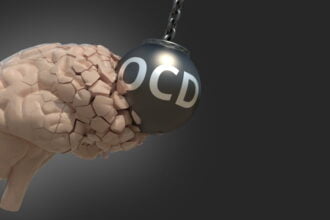Traumatic brain injury (TBI) is a complex medical condition that can result from various types of impact incidents, including motor vehicle accidents, falls, sports injuries, and assaults. While some symptoms of brain injury may manifest immediately after the incident, there is a silent threat posed by delayed onset symptoms that may not become apparent until days, weeks, or even months later. Despite appearing normal post-incident, individuals may experience these delayed symptoms, which can pose significant health risks if left unrecognized and untreated.
Understanding Delayed Brain Injury Symptoms
Traumatic brain injury occurs when an external force causes damage to the brain, disrupting its normal functioning. Common causes of TBI include sudden jolts or blows to the head, which can occur in various contexts, from car accidents to falls from heights or sports-related collisions.
One of the challenges of diagnosing TBI is the delayed onset of symptoms, which may not be immediately apparent following the incident. The Mayo Clinic relayed that sometimes TBI symptoms, such as that of a concussion, might not show up until a few days later.
The delayed onset of brain injury symptoms can be attributed to several factors. Adrenaline and shock often mask initial symptoms, allowing individuals to appear unaffected immediately after the impact. Additionally, the progression of internal injuries may be slow, with symptoms gradually worsening over time. Psychological trauma, such as the stress and anxiety associated with the incident, can also impact symptom manifestation. Furthermore, there are individual variations in how symptoms present and the timeline for recovery, making it difficult to predict when or how symptoms will emerge.
Recognizing the Signs
Recognizing the signs of delayed brain injury is crucial for early intervention and treatment. While some symptoms may overlap with those of immediate brain injury, others may be subtler and more easily overlooked. Physical signs to watch for include headaches, dizziness, nausea, and sensitivity to light or noise. Cognitive symptoms may include memory problems, difficulty concentrating, and slowed thinking. Emotional symptoms, such as mood swings, irritability, and changes in behavior or personality, may also indicate underlying brain injury.
It’s important for individuals and their loved ones to monitor for subtle changes over time, as symptoms may emerge gradually and worsen as the brain heals or adjusts to the injury. Keeping a journal of symptoms and any changes in behavior or cognitive function can help track the progression of the injury and provide valuable information for healthcare providers.
The Risks of Ignoring Delayed Symptoms
Ignoring delayed brain injury symptoms can have serious consequences. A brain injury lawyer relayed that untreated brain injuries can lead to long-term complications, including cognitive impairment, memory loss, and emotional disturbances. Individuals may experience difficulties with daily activities, such as work, school, or social interactions, and their relationships may suffer as a result. Additionally, untreated brain injuries increase the risk of secondary injuries, such as seizures or infections, and may exacerbate existing health conditions.
From a legal and insurance standpoint, delayed diagnosis of brain injury can complicate matters related to compensation and liability. Insurance claims may be denied or disputed if there is insufficient evidence of injury or if symptoms are not promptly reported and documented. Legal recourse may also be limited if the statute of limitations for filing a claim has expired due to delayed symptom onset.
Strategies for Detection and Early Intervention
Detecting and addressing delayed brain injury symptoms requires a proactive approach. Individuals who have experienced any type of impact incident, whether it be a motor vehicle accident, fall, sports injury, or other trauma, should seek medical evaluation promptly, even if they initially appear unharmed. Healthcare providers can conduct neurological assessments and diagnostic tests, such as CT scans or MRIs, to detect brain injuries and assess their severity.
Collaboration between healthcare professionals, family members, and caregivers is essential for managing delayed brain injury symptoms effectively. Rehabilitation programs tailored to the individual’s needs can help improve cognitive function, physical mobility, and emotional well-being. Early intervention may also prevent further complications and promote better outcomes for individuals recovering from brain injury.
Staying Vigilant and Aware
The silent threat of delayed brain injury symptoms underscores the importance of vigilance and awareness in the aftermath of impact incidents. Individuals must prioritize their health and seek timely medical attention if they experience any symptoms suggestive of brain injury. By recognizing the signs, understanding the risks, and taking proactive steps toward detection and early intervention, they can mitigate the silent threat of delayed brain injury symptoms and improve outcomes for those impacted by these injuries.









